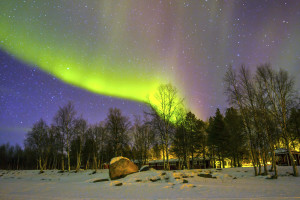As the holiday season, Christmas and a new year come our way, there has been the inevitable emergence of cold weather imagery in stores, restaurants, etc. The mascot of the season, of course, is none other than Santa Clause! Do you ever stop and think of where Santa Clause came from and lives? People say it’s the North Pole. But could that famous workshop maybe be in Alaska?
For our State of the Month, we decided to take a journey up north and show you our largest state. This might just be the place where Santa spends most of his days.
Business Climate
Alaska’s land area of 663,300 square miles is more than twice the size of Texas, yet despite its incredible land size, its population of 735, 601 (as of 2014), is one of lowest in the nation. A much smaller Rhode Island has a bigger population (1.055 million) than Alaska. Nonetheless, its lack of citizens does not speak poorly of its business environment.
The state is full of natural resources such as oil, natural gas, and lumber that aid its economy. The summer months attract thousands of tourists from around the globe. The state of Alaska prides itself in its natural beauty and resources. Many stores are open for business in the summer months to cater to tourists, while closing down in the slow winter months.
The holidays are often a great time for businesses as they coincide with the state distributing its annual Personal Fund Dividend (PFD) to its citizens. In Alaska, every year the state distributes a portion of its reserves back to each of its citizens. The PFD normally comes in the months of October or November, and assists families at the end of the year. In 2015, the PFD amounted to $2,072 per person. Because consumers have more cash in their pockets, it also tends to benefit businesses through higher sales in the winter months. Click here for more information on Alaska’s Personal Fund Dividend.
Unfortunately, the downside to doing business in Alaska is the development and transportation costs associated with it. It is difficult to import goods into the state as it requires a boat or a plane to transport materials. Accessibility is one of the major factors hindering business in Alaska.
Tax Climate
According to the Tax Foundation’s 2015 State Business Tax Climate Index, Alaska’s tax system is one of the best in the country, ranking 4th out of 50. A major contributor to its high position, is that the state does not levy personal income tax or a state sales tax. Only local sales taxes apply which have an average rate of 1.76% in the state. The state has significantly decreased the tax burden on individuals and applied it to businesses.
Alaska’s corporate income tax consists of a ten-bracket system, with rates ranging from 0%-9.4%. Its top rate of 9.4% is the 4th highest among states that levy corporate income tax. Alaska’s state and local corporate income tax collections per person were $912 in 2012 which ranked highest in the nation.
Tax Credits & Incentives
Education Tax Credit: This tax credit results from contributions corporations make to educational institutions in the state. The education tax credit is non-transferable and non-refundable. The credit amounts to 50% of the first $100,000, 100% of the contribution over $100,000 and up to $300,000 and 50% of the remaining amount over $300,000. The total allowable credit per year for all affiliated taxpayers may not exceed $5 million. Qualified contributions include but are not limited to:
- Cash contributions to Alaska universities and accredited nonprofit Alaska two-year or four-year colleges for facilities, direct instruction, research, and educational support purposes.
- Donations to a school district or state-operated vocational technical education and training school for vocational education courses, programs, and facilities.
- Donations for Alaska Native cultural or heritage programs for public school staff and students, and a facility in the state that qualifies as a coastal ecosystem learning center under the Coastal American Partnership also qualify.
- Contributions to the Alaska Higher Education Investment Fund established in 2012.
Exploration Incentive – (AS 41.09.010): This is a distinct incentive program administered by the Department of Natural Resources. The credit is available to be claimed against royalty obligations, corporate income tax and production tax.
- Taxpayers may take a credit up to 50% on state land (or 25% on non-state lands) of eligible oil and gas exploration expenditures.
- An approved incentive credit under this statute may not exceed $5 million per project and is limited to $30 million per taxpayer.
Random Facts
- Russia controlled most of the area that is now Alaska from the late 1700’s until 1867, when it was purchased by U.S. Secretary of State William Seward for $7.2 million, or about two cents an acre.
- Alaska contains 17 of the 20 highest peaks in the United States. At 20,320 feet, Mt. McKinley is the tallest mountain in North America.
- The state of Rhode Island could fit into Alaska more than 420 times.
- The Trans-Alaska Pipeline moves up to 88,000 barrels of oil per hour on its 800 mile journey to Valdez.
- During the Klondike gold rush in 1897, potatoes were so highly valued for their vitamin C content, that miners traded gold for them.
- Aurora Borealis (Northern Lights] can be seen an average of 243 days a year in Fairbanks.
- Every year Alaska hosts the 1,200 mile-long Iditarod Trail Sled Dog Race from Anchorage to Nome, often called the “Last great race on Earth.”














